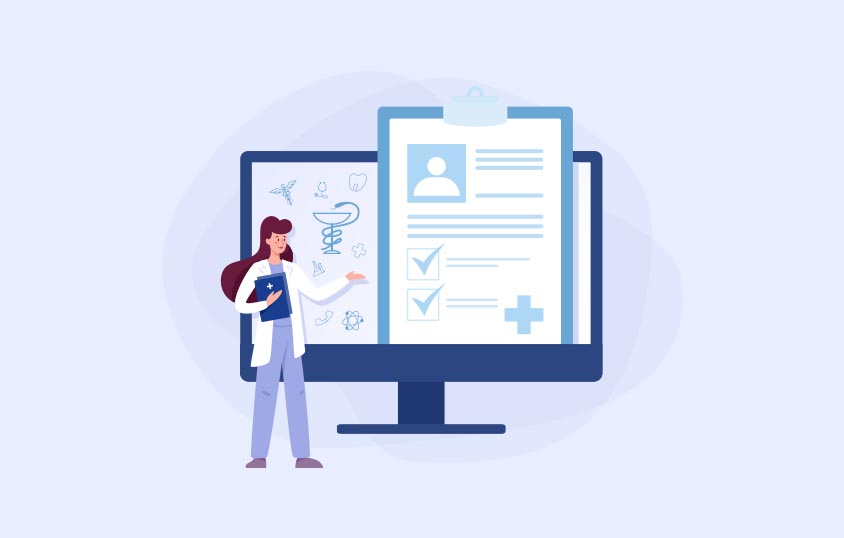Content
Recent Posts
How EHR Systems Improve Patient Engagement

Patient engagement is becoming one of the most important drivers of better healthcare outcomes. When patients are involved in their care, they’re more likely to follow treatment plans, manage chronic conditions, and stay connected with their providers. Electronic Health Records (EHRs) play a key role in making this possible. Beyond storing medical histories, modern EHR systems create direct lines of communication, improve access to information, and support more personalized care. This article looks at how EHRs strengthen patient engagement, the features that matter most, examples from leading providers, and the challenges they might pose in terms of engagement.
Content
Why Patient Engagement Matters in Healthcare
Engaged patients are more likely to follow treatment plans, attend scheduled appointments, and actively manage chronic conditions. This participation leads to fewer hospital readmissions, better outcomes, and higher satisfaction.
Research shows that when patients use digital tools like portals and reminders, they are less likely to miss appointments and more likely to adhere to prescribed treatments. For example, timely lab results delivered through a portal can give patients peace of mind and reduce unnecessary visits.

Core EHR Features That Improve Engagement
Several features within EHR systems are designed with patient participation in mind:
- Patient portals: These portals give patients 24/7 access to medical records, lab results, and visit summaries, building trust and keeping them informed
- Secure messaging: This feature connects patients directly with their care team, allowing them to ask questions about medications or symptoms without waiting for the next appointment
- Appointment scheduling and reminders: These tools help patients stay organized, reduce no-shows, and make it easier to keep up with their care plans
- Telehealth integration: This option enables patients to attend virtual visits from home, saving time and improving access to care
- Mobile accessibility: These apps keep patients connected on the go, letting them check results, receive updates, and confirm appointments from their mobile devices
How Medical Software Strengthens Communication Between Patients & Providers
EHR and communication improvements
Strong communication is at the heart of patient engagement. EHR systems make it easier for providers and patients to stay connected outside the exam room.
Providers can send visit summaries, follow-up instructions, or medication reminders directly through the patient portal. Instead of sifting through paper handouts, patients can review their instructions digitally and share them with family members if needed. Secure two-way messaging also allows for quick clarifications, reducing the risk of misunderstandings.
Some systems include translation tools that make instructions accessible in different languages. This ensures that patients from diverse backgrounds receive clear, understandable information. By reducing communication gaps, EHR systems help patients feel more confident and involved in their care.

Personalization and patient empowerment
Customizable care plans allow providers to share educational resources tailored to specific conditions, such as diabetes management or mental health support. Patients can track their progress through integrated tools like symptom logs, medication trackers, or weight charts. Seeing measurable improvements keeps patients motivated and encourages them to follow through with their care plan.
Feedback loops also empower patients. Many systems include dashboards that show progress over time, such as lowered blood pressure or improved lab values. When patients see tangible results linked to their actions, they feel more engaged and more committed to maintaining healthy habits.
Best EHR Providers for Patient Engagement
Cerner
Cerner (now part of Oracle Health) is one of the largest EHR providers, and they excel in connecting patients with providers through health portals and mobile apps. Their HealtheLife portal gives patients access to records, test results, and secure messaging with providers, ensuring transparency and communication. Cerner also integrates population health tools and predictive analytics, allowing providers to deliver personalized care plans that keep patients motivated and engaged. With robust interoperability, patients can also benefit from smoother care coordination across multiple healthcare systems.
Athenahealth
Athenahealth is well-regarded for creating two-way communication channels between patients and providers. Their athenaCommunicator and athenaPatient app offer secure messaging, reminders, and care-gap alerts that directly improve adherence. The system’s engagement features reduce missed appointments and make it easy for patients to stay informed about their care. Athenahealth also uses automation to send reminders and collect feedback, giving patients a stronger role in the care process. Its emphasis on real-time access to lab results and records fosters trust and confidence, keeping patients more actively involved.
Get a Personalized Athenahealth Quote
DrChrono
DrChrono has been a pioneer in mobile-first EHR design, making patient engagement tools available anytime, anywhere. Patients can use the OnPatient portal and app to request appointments, view records, refill prescriptions, and securely message providers. For tech-savvy patients, DrChrono’s mobile accessibility is a major strength, as it makes healthcare interactions seamless. Providers can also share educational resources and care plans directly through the app, giving patients tools to monitor progress and stay engaged between visits. DrChrono’s strong telehealth and billing integrations further simplify the patient experience.
Schedule a DrChrono Consultation
SimplePractice
SimplePractice is widely recognized for its focus on patient accessibility and ease of use, especially in behavioral health practices. It's built-in telehealth integration allows patients to join secure video sessions directly from the platform, reducing barriers to care. Automated reminders, self-scheduling, and mobile access help patients stay on top of appointments and treatment plans. The user-friendly patient portal also makes it easy for clients to access documentation, request appointments, and communicate with providers, all of which strengthen engagement.
How Medical Software Could Hinder Patient Engagement
One major challenge is the digital divide. Patients who are less tech-savvy, older, or without reliable internet access may struggle to use portals and apps. Complex interfaces can also discourage patients from engaging.
Privacy and security are other concerns. Patients may hesitate to use online portals if they worry about data breaches or misuse of personal information. Building trust requires providers to communicate the security measures in place.
Keep in mind that technology alone cannot ensure engagement. Providers must actively encourage patients to use the tools. If staff do not explain the benefits or help patients get started, adoption rates remain low.

Future Trends: Where EHR & Engagement Are Heading
The future of patient engagement through EHR looks promising, with several trends on the horizon:
- AI-driven personalization will tailor health education, reminders, and alerts based on individual patient behavior and conditions
- Integration with wearables will allow data from fitness trackers, glucose monitors, or blood pressure cuffs to flow directly into EHR systems, giving patients real-time feedback
Conclusion
Electronic Health Records are no longer just digital filing systems; they’re central to improving patient engagement by making care more accessible, personalized, and collaborative. Features like portals, secure messaging, reminders, telehealth, and mobile apps help patients stay informed, connected, and motivated to follow treatment plans, while providers gain new ways to support communication and track progress. Platforms such as TherapyNotes, SimplePractice, Ensora Mental Health, and Valant highlight how tailored tools can strengthen involvement, especially in behavioral health. Still, barriers like limited tech access, privacy concerns, and complex interfaces remain, underscoring the need for provider guidance. With advances in AI and integration with wearables on the horizon, EHR systems are positioned to drive even deeper patient engagement in the years ahead.